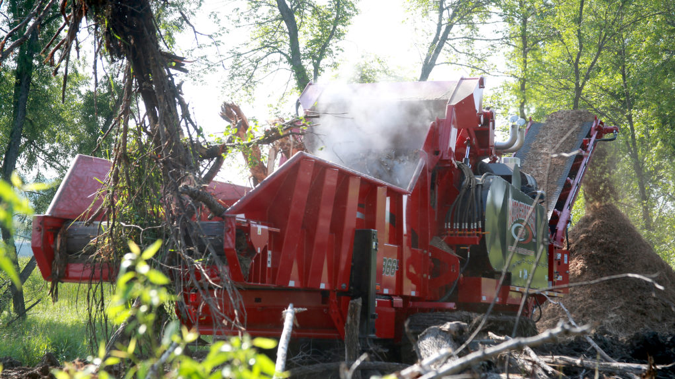
Horizontal grinders are valued for their simplicity and versatility. While they are well-suited to handling brush, agriculture products, and shingles, they’re also capable of tackling longer, larger materials, like logs and even whole trees, without having to rely on trimming the material before grinding. Because of their varied usage, it is important to choose the model that’s right for your job. Before you settle on a specific horizontal grinder, consider these factors.
Material Going In
First, consider what you will be sending through your grinder. Some grinders are more equipped to handle specific materials; Rotochopper’s B-66L, for example, is better suited to grinding high volumes of tough material, like orchard waste, dense brush, and logs
If you plan to use your grinder to process several different types of material, consider the one you’ll be grinding most often. Switching out the screens and teeth on your grinder allows you to process different materials at different sizes, but your purchase should remain focused on your main feedstock. Additionally, consider grinders that provide attachments and packages that can easily convert the functionality of your grinder, like Rotochopper’s chipper package, to meet the needs of specific grinding jobs.
Desired Result
You should also have a clear purpose in mind for the ground material. Are you producing a secondary product, or are you simply looking to reduce volume for transport? If you’re planning to sell the end product, consider the standards of your target industry. Many have specific particle size requirements, so a high-speed grinder would be ideal for keeping size consistent.
Volume and Density
The size of the grinder that’s best for your job will depend on the amount of product you plan to process—the larger the volume, the larger the grinder. Additionally, bigger and denser materials require larger grinders, as well as increased horsepower.
Diesel or Electric
Electric grinders can offer a reduced operating cost if your operation has 3-phase power and a fixed or limited location. They also don’t require many of the additional costs that come with diesel engines upkeep, like fluid and filter replacement. Diesel grinders do offer increased portability over electric grinders, although semi-portable electric grinders do exist.
Service
Picking a horizontal grinder isn’t just about the purchase itself—it’s about the service you’ll receive long after the initial business transaction is over. If your grinder needs service, you want confidence the problem will be resolved with the care and efficiency it deserves. With Rotochopper, service team members are responsive, and getting replacement parts is easy—next-day shipping is available for most parts if they can’t be found locally.
Choosing the right horizontal grinder is key to ensuring both the efficiency and cost-effectiveness of your operation. Your Rotochopper representatives are experts when it comes to helping you make the right decision. Contact us today—we’re happy to help.
